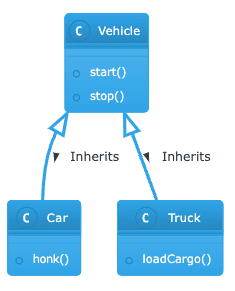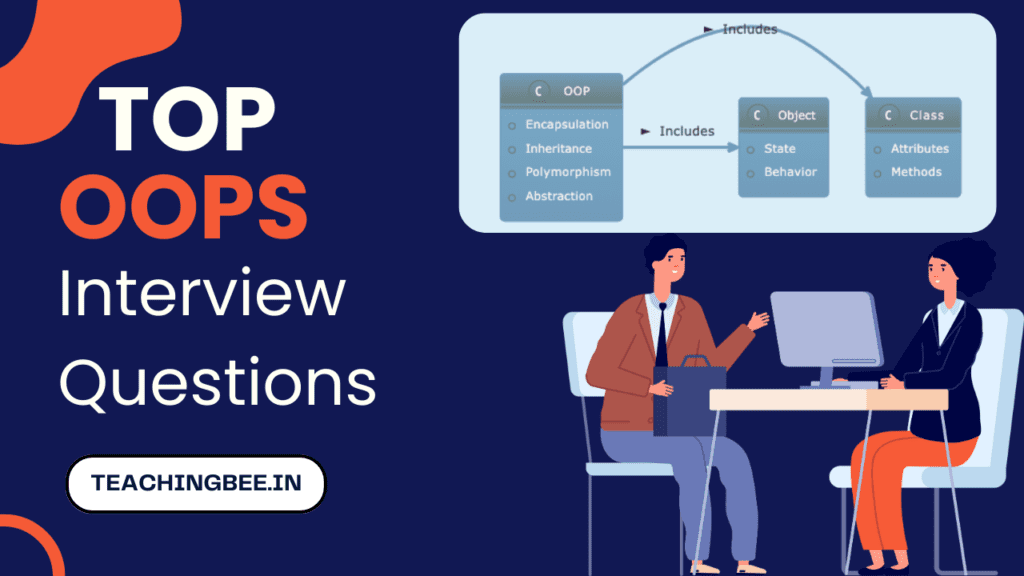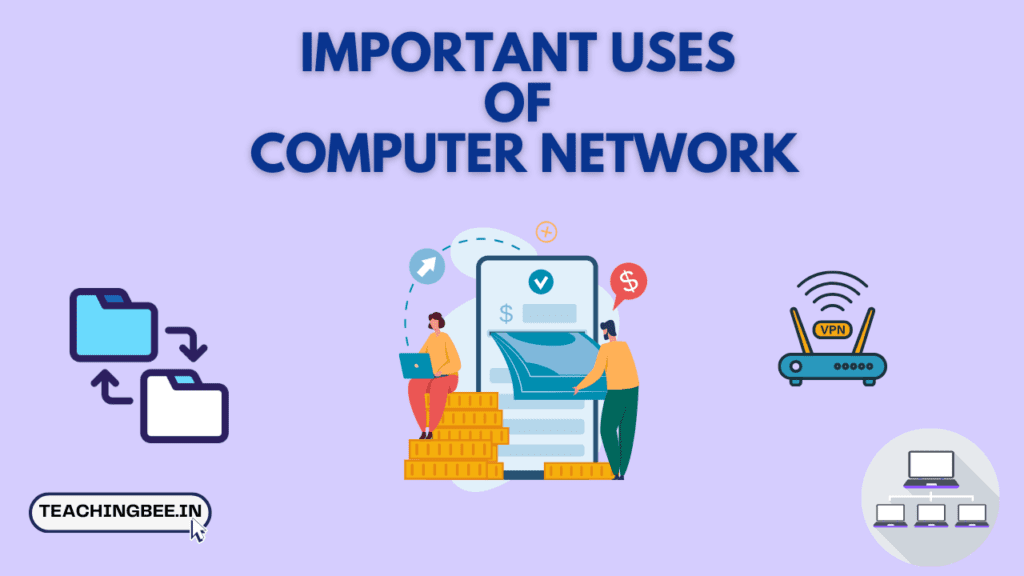Table of Contents
ToggleOOPS stands for Object-oriented programming (OOP) System is a fundamental programming paradigm used across many software applications and languages.
Understanding OOP concepts like classes, objects, inheritance, and polymorphism is crucial for any developer role. In this comprehensive guide, we’ll explore the most common OOP interview questions and answers you’re likely to encounter in 2023 along with code examples. You’ll learn about key OOP interview questions and also principles, design patterns, best practices, and language-specific concepts.So, Let’s dive in!
Basic OOP Interview Questions And Concepts For Freshers
What is OOPS (Object-Oriented Programming System)?
Object-oriented programming system is a programming paradigm centered around the concept of objects. OOP aims to model real-world entities using classes and objects.
Some of the key things to know about OOPS:
- OOPS focuses on objects that contain data (attributes) and code (methods).
- Objects are instances of classes. Classes are blueprints that define common attributes and behaviours.
- Follows bottom-up approach in program design.
- Promotes modularity and reusability through inheritance and composition.
- Improves maintainability and flexibility by encapsulating change.
- Languages like Java, Python, C++, C# etc support OOPS to varying degrees.
Some key principles of OOP:
- Encapsulation – Binding data and functions into a single unit called class
- Inheritance – Ability of a class to inherit properties and methods from parent class
- Polymorphism – Ability to take multiple forms
- Abstraction – Hiding complex implementation details from user
Explain Classes and Objects
A class is like a blueprint for an object. It defines properties and methods common to all objects of that class. An object is an instance of a class created at runtime.
For example, a Person class can have properties like name, age and methods like introduce() etc. Each object, like a person1 will have these properties and methods.
// OOP Interview Questions And Answers
#include <iostream>
using namespace std;
// Class definition
class Person {
public:
string name;
int age;
// Method declaration
void introduce() {
cout << "My name is " << name << " and I am " << age << " years old." << endl;
}
};
int main() {
// Object creation
Person person1;
// Accessing attributes
person1.name = "John";
person1.age = 25;
// Calling method
person1.introduce();
return 0;
}In this above example:
Personis a class with attributesnameandage, and a methodintroduce().person1is an object of classPersoncreated in themain()method.
What is Inheritance?
Inheritance allows a child class to inherit attributes and methods from a parent class. This promotes code reuse since common logic can be defined once in the parent class and shared.
For example, a Truck and Car class can both inherit from a general Vehicle class sharing the same start() method. The child classes can also override parental behavior as needed.
// OOP Interview Questions And Answers
#include <iostream>
using namespace std;
// Base class
class Vehicle {
public:
void start() {
cout << "Vehicle started" << endl;
}
};
// Derived class
class Car: public Vehicle {
};
int main() {
Car car;
car.start(); // Calls base class start()
}What is Polymorphism?
Polymorphism allows objects to take multiple forms and respond differently based on context. There are two main types:
- Compile-time (overloading)
- Runtime (overriding)
Overloading is having methods of the same name but different parameters. Overriding is changing the parent class method behaviour in the child class.
Runtime Polymorphism (Method Overriding)
The below code shows runtime polymorphism using method overriding. The overridden print() method is called based on the runtime object type.
// Runtime Polymorphism (Method Overriding)
#include <iostream>
using namespace std;
class Base {
public:
virtual void print() {
cout << "Base print" << endl;
}
};
class Derived: public Base {
public:
void print() {
cout << "Derived print" << endl;
}
};
int main() {
Base *bptr;
Derived d;
bptr = &d;
bptr->print(); // Calls derived version
}Compile-Time Polymorphism (Method Overloading)
// OOPS Interview Questions C++
#include <iostream>
using namespace std;
class Calc {
public:
int add(int a, int b) {
return a + b;
}
double add(double a, double b) {
return a + b;
}
};
int main() {
Calc calc;
cout << calc.add(2, 3) << endl;
cout << calc.add(1.2, 3.3) << endl;
}Here the add() method is overloaded with different signatures. The correct overloaded method is resolved at compile time based on the parameter types.
What is Encapsulation?
Encapsulation binds data and functions into a single unit called class. It hides the internal representation from external code. This reduces complexity by preventing direct access to class internals.
Getters and setters allow accessing properties while private methods restrict access to class logic. This way classes have full control over their state.
Intermediate OOP Interview Questions And Concepts
What is Abstraction?
Abstraction refers to exposing only essential features of an entity while hiding internal complexity. For example, a Car class only exposes drive(), brake() etc. without implementation details.
Abstract classes can define signatures for methods that child classes then provide implementations for. Interfaces are also used to define abstraction.
Explain Composition vs Inheritance
Composition represents a “has a” relationship where a class contains or uses instances of other classes. For example, a Car class can contain a Tire class object.
Inheritance represents an “is a” relationship where a child class derives from a parent class. For example, a Sedan class inherits from a general Car class.
Composition provides more flexibility compared to inheritance and should be preferred in many cases.




What are Interfaces?
Interfaces define a contract specifying method signatures that implementing classes must follow without any implementation. This provides abstraction by separating specification from implementation.
For example, a Driveable interface can specify start(), stop() and accelerate() methods that Car and Bike classes then implement.
What is Method Overloading and Overriding?
Method overloading refers to having multiple methods with the same name but different parameters. Which one gets called depends on parameter types at runtime.
Method overriding is defining a child class method with the same signature as a parent’s to change its behavior. The child implementation overrides the parent implementation.
Advanced OOP Interview Questions Concepts For Experienced
What is Multiple Inheritance?
Some languages allow a class to inherit attributes and methods from multiple parent classes. This is called multiple inheritance.


For example, class C can inherit from both A and B. However, multiple inheritance comes with complexity and ambiguity, so it is avoided in many OOP languages.
// Multiple Inheritance
#include <iostream>
using namespace std;
// Base classes
class A {
public:
void printA() {
cout << "Class A" << endl;
}
};
class B {
public:
void printB() {
cout << "Class B" << endl;
}
};
// Derived class inheriting from two base classes
class C : public A, public B {
};
int main() {
C c;
c.printA();
c.printB();
}In this example:
- Class
Cinherits from both base classesAandBusing a comma-separated list. Ccan access the public members of both the base classes.- The
printA()andprintB()methods of the respective base classes can be called on the derived class object. - This allows
Cto reuse code from multiple parent classes.
Explain SOLID Principles
SOLID comprises five OOP design principles:
S – Single Responsibility Principle
O – Open/Closed Principle
L – Liskov Substitution Principle
I – Interface Segregation Principle
D – Dependency Inversion Principle
These principles encourage modular and flexible OOP design. For example, classes should have a single clear purpose and be open for extension but closed for modification.
What is Dependency Injection?
Dependency injection (DI) refers to passing down dependencies from the top rather than creating them internally. This leads to loose coupling and easier testing and configuration.
For example, rather than a class creating a logger internally, the logger can be injected through the constructor. Frameworks like Spring use DI extensively.
// Dependency Injection Java
interface Logger {
public void log(String message);
}
class ConsoleLogger implements Logger {
public void log(String message) {
System.out.println(message);
}
}
class Service {
private Logger logger;
public Service(Logger logger) {
this.logger = logger;
}
public void doWork() {
// Do some work
logger.log("Work completed!");
}
}
public class Main {
public static void main(String[] args) {
Logger consoleLogger = new ConsoleLogger();
Service service = new Service(consoleLogger);
service.doWork();
}
}In this example:
- The
Loggerinterface defines the logging behavior. ConsoleLoggerimplements theLoggerinterface.- The
Serviceclass depends on aLoggerto log messages. - Rather than creating a logger directly, we inject
ConsoleLoggervia constructor. Maincreates aConsoleLoggerinstance and passes it toService.Servicecan now use the injectedloggerreference to log messages.
So dependency injection facilitates loose coupling by allowing dependencies to be injected into a class rather than created by the class itself. This makes the code more testable and maintainable.
What are Design Patterns in OOP?
Design patterns in object-oriented programming are reusable solutions to commonly occurring software design problems. They provide templates to implement optimized solutions for typical use cases faced during software development.
Some key things to know about OOP design patterns:
- They capture expert software design experience and best practices.
- Design patterns provide a common vocabulary to describe solutions.
- They are programming language agnostic and can be applied in any OOP language.
- Common design patterns include:
- Creational patterns like Factory, Singleton, Builder etc.
- Structural patterns like Adapter, Facade, Decorator etc.
- Behavioral patterns like Observer, Strategy, State etc.
- Design patterns leverage OOP principles like inheritance, encapsulation, polymorphism to solve problems.
- Using design patterns improves reusability, flexibility and maintainability of code.
- They help manage software complexity by providing prebuilt blueprints.
- Design patterns promote loose coupling and separation of concerns.
Language-Specific OOP Questions
OOP support can vary across languages:
Java OOP Interview Questions
Here are some common Java-specific OOP interview questions and answers :
Q: What is the difference between an abstract class and interface in Java?
In Java, an abstract class can contain both abstract and concrete methods. An interface on the other hand can only contain abstract methods and constants. Abstract classes allow code reuse through concrete methods while interfaces contain only signatures.
// Abstract class
abstract class Shape {
int color;
abstract void draw();
void setColor(int color) {
this.color = color;
}
}
// Interface
interface Drawable {
void draw();
}Q: How is polymorphism achieved in Java?
Polymorphism in Java is achieved through method overloading and overriding. Method overloading refers to methods with same name but different parameters. Method overriding means subclasses can override superclass methods.
// Method overloading
void print(String s) { }
void print(int i) { }
// Method overriding
class Vehicle {
void drive() { }
}
class Car extends Vehicle {
@Override
void drive() { }
} Q: How do you prevent class inheritance in Java?
Use the final keyword to prevent a class from being inherited. Declare the class as:
// Preventing Class Inheritance In Java
public final class MyClass {
// code goes here
}This makes MyClass non-extendable.
Q: What is a singleton class in Java and how is it implemented?
A singleton class allows only one instance to be created. In Java, a singleton can be implemented by:
- Making constructor private
- Creating a static method that returns instance
- Lazy initialization
For example:
// Singleton Class in Java
public class Singleton {
private static Singleton instance;
private Singleton() {}
public static Singleton getInstance() {
if (instance == null) {
instance = new Singleton();
}
return instance;
}
}OOP Interview Questions Python
Here are some common Python-specific OOP interview questions and answers :
Q: How is polymorphism achieved in Python?
In Python, polymorphism is mainly achieved through duck typing. Duck typing allows different classes to be used interchangeably if they implement the same methods and attributes.
class Duck:
def talk(self):
print("Quack Quack")
class Dog:
def talk(self):
print("Bark Bark")
def animal_talk(animal):
animal.talk()
d = Duck()
animal_talk(d) # Quack Quack
d = Dog()
animal_talk(d) # Bark BarkQ: How are abstract base classes defined in Python?
Abstract base classes can be defined in Python by importing the ABC module and subclassing ABC. Abstract methods can be declared with @abstractmethod decorator.
from abc import ABC, abstractmethod
class Shape(ABC):
@abstractmethod
def draw(self):
pass
class Circle(Shape):
def draw(self):
print("Drawing circle") Q: What is name mangling in Python?
Name mangling refers to renaming class member names starting with double underscore to avoid naming collisions when inheriting from classes.
For example, __variable becomes _Classname__variable.
Q: How are private class members defined in Python?
Python does not have strict private class members. However, a convention used is to prefix name with single underscore _ to indicate it should be treated as private.
For example:
class Example:
def __init__(self):
self._private_field = 0Here _private_field should be considered private.
OOPS Interview Questions C++
Here are some common OOP interview questions C++ and answers and code snippets:
Q: What is multiple inheritance in C++ and how is it implemented?
C++ supports multiple inheritance, where a class can inherit attributes and methods from multiple parent classes. This is done by specifying multiple base classes separated by commas in the class declaration:
class Child : public Parent1, public Parent2 {
};Q: What are virtual functions in C++? How are they implemented?
Virtual functions in C++ are class methods that are intended to be overridden in derived classes. This allows runtime polymorphism. They are declared using the virtual keyword:
class Base {
public: virtual void print() {
// Base print
}
};
class Derived: public Base {
public: void print() override {
// Derived print
}
};Q: Explain encapsulation in C++.
Encapsulation is implemented in C++ using access specifiers like public, private and protected. Private class members can only be accessed within the class while public members are accessible outside.
class Person {
private: int age;
public: string name;
void setAge(int a) {
age = a;
}
};Here age is encapsulated while name is accessible.
Q: What are destructors in C++? When are they called?
Destructors are special methods that are called automatically when an object is destroyed. They follow the naming convention ~Classname(). Destructors are called when object goes out of scope or delete is called.
Let me know if you need more C++ specific OOP interview questions explained with code examples!
Behavioural OOP Interview Questions
How do you approach OOP in a team setting?
- Focus on clean architecture with separation of concerns
- Ensure everyone follows established design principles and patterns
- Code reviews to disseminate OOP best practices across team
- Refactor legacy code to make it more modular
Can you provide an example of a project where OOP was crucial?
- E-commerce site layered architecture with model, business, data layers
- UI components made reusable across app via inheritance
- Checkout process encapsulation in classes with single responsibilities
How do you keep up-to-date with OOP best practices?
- Read books like Clean Code and Head First Design Patterns
- Take online courses and watch conference talks
- Learn new languages like Go with novel OOP approaches
- Experiment with projects focusing on SOLID principles
OOP Best Practices
Some key OOP best practices:
Code Reusability
- Inheritance for shared logic
- Loose coupling between components
- Avoid duplication with abstraction
Maintainability
- Encapsulate internal details
- Open for extension, closed for modification
- Break into simple single responsibility classes
Testability
- Prefer composition over inheritance
- Program to interfaces not implementations
- Avoid static methods and state
Following best practices results in robust, modular OOP code.
Additional Resources
- Books – Head First Object-Oriented Analysis and Design, Clean Code
- Online Courses – OOP in Python, Java OOP Masterclass
- Communities – r/learnprogramming, Stack Overflow
Conclusion
We’ve explored a wide array of OOP interview questions you’re likely to encounter. You should now have strong foundations around:
- What is OOPS?
- Key OOP concepts like inheritance and polymorphism
- Design principles like SOLID
- Patterns like factory and singleton
- Programming language specifics
- Communicating OOP experience
With diligent preparation using resources like this guide, you’ll be able to effectively demonstrate your OOP skills during interviews and tackle any OOP interview Questions. Best of luck!
Try out our free resume checker service where our Industry Experts will help you by providing resume score based on the key criteria that recruiters and hiring managers are looking for.
FAQ Related to OOP Interview Questions
How do I prepare for an OOPs interview?
Preparing for an OOP interview questions requires a focused approach. Here are some pointers to guide your preparation:
- Master Core Concepts- Thoroughly understand the four pillars of OOP: encapsulation, inheritance, polymorphism, and abstraction. Be prepared to explain these concepts, provide examples, and discuss their advantages and disadvantages. Knowing design patterns like Singleton, Factory, and Observer can also be beneficial.
- Hands-On Coding Practice- Practice coding problems that involve implementing OOP principles. Make sure to write, debug, and test code to solidify your understanding.
What are any 4 features of OOP?
Object-Oriented Programming (OOP) features four key concepts:
- Encapsulation: Bundles data and methods within objects, restricting unauthorized access and modification.
- Inheritance: Allows a class to inherit attributes and methods from another class, promoting code reusability.
- Polymorphism: Enables objects to be treated as instances of their parent class, allowing for interface consistency.
- Abstraction: Hides complex reality while exposing only essential features, simplifying the representation of objects in the program.




